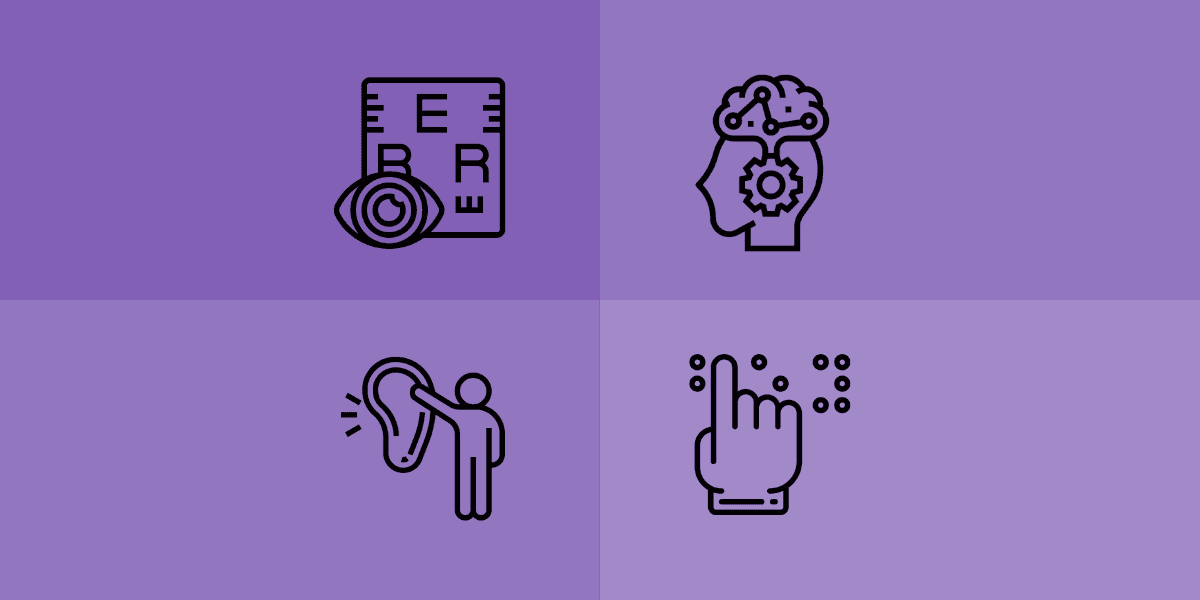
Web Accessibility: Building Websites for Everyone
TECHNOLOGY OF EXPERIENCE, EDITORIAL.![[Img]Web Accesibility](/_next/image?url=https%3A%2F%2Fimages.ctfassets.net%2Fc63hsprlvlya%2FRrlrqxVTWSO7wR2iS8KSO%2Fd39620a06bfcadea36efae041c2526ad%2FiStock-1389453275.jpg&w=3840&q=75)
Websites must be accessible to all people. Developers must make the information on their website useful and understandable to any segment of the population.
American Disability Act (ADA)
In an effort to ensure equal opportunity for people with disabilities, on 12 March 1990, approximately 1,000 US citizens marched on the White House to demand that Congress pass legislation to prohibit discrimination on the basis of disability.
Since 1986, the National Council for Disability had drafted a first version of the bill, which was developed due to the inaccessibility of public spaces faced by people with disabilities, which violated their rights.
On 26 July 1990, President George Bush signed into law the Americans with Disabilities Act (ADA).

The ADA is a civil rights law that protects people with physical disabilities in order to improve their quality of life by providing access to all public accommodations.
Since the passage of this law, Disability Pride Month, also known as Disability Pride Month, has been celebrated every year in July in the United States. The first official celebration took place in July 2015, coinciding with the 25th anniversary of the ADA.
Since then, cities across the country have celebrated Disability Pride Month with parades and other festivities. This celebration has also been embraced in countries such as the United Kingdom and South Africa.
The concept of Disability Pride was born out of the Disability Rights movement. The main idea is to change the way society perceives disability, i.e. to erase the stigma that physical limitations create and to ensure equality. This celebration allows people with disabilities to accept their condition as an integral part of their lives.
Disability Pride is defined as "accepting and honoring the uniqueness of each person and seeing it as a natural and beautiful part of human diversity".

The passage of the ADA made it possible for people with disabilities to be included in all physical environments. However, these benefits are often not applied in the digital world. In this case it is important to refer to Title III of the ADA which states:
"No individual may be discriminated against on the basis of disability with respect to the full and equal enjoyment of the goods, services, facilities or accommodations of any place of public accommodation".
When we speak of "places of public accommodation" we generally think of physical locations such as schools, restaurants, parks, shops, etc.
What is the ADA's relationship to web accessibility?
Although digital environments were created several years ago, when the ADA was enacted most people did not even have access to the internet. As a result, there was no concern about ensuring access to websites for people with disabilities.
However, with the advancement of technology, the lack of inclusion in digital platforms for people with physical limitations has become evident.
Could you navigate a website with your eyes closed? This would be impossible if the website does not have assistive technologies that allow you to hear what is on the screen. A blind person, for example, needs the support of specialized software to be able to understand what is happening on a web page.
Recently, US federal courts have noted an increase in complaints against websites by people with disabilities under Title III of the ADA, stating that all websites are "places of public accommodation" and therefore must ensure accessibility for all people with disabilities in their digital services.
While it has not yet been established that this is mandatory, it is likely that in the near future it will be confirmed that websites fall under the ADA.
The best option is to anticipate this situation. While most Ecommerce companies state the importance of providing a good user experience, many do not have digital platforms that are useful for people with disabilities.
If you want to ensure that your website reaches all potential users of your brand, you must offer alternative methods so that even people with physical limitations can access it.
What is web accessibility and how does it work?
Web accessibility refers to the need for any website or technological platform to be designed and developed with the necessary requirements for people with disabilities to be able to use them.
Everyone should be able to understand, navigate and interact with the web, regardless of any hearing, cognitive, neurological, physical, speech or visual disability.
Web applications, technologies or tools that have an accessible design remove barriers to communication and interaction that people with disabilities may face in the physical world.
Accessibility is essential for those who want to create high quality websites and web tools, and those who seek not to exclude anyone from using their products and services.
4 Principles of web accessibility
The most recent standards set out four fundamental principles on which to focus in order to create an accessible website:
1. Perceptible
Visitors should be able to perceive the content and information presented on the website with their senses, with nothing invisible or undetectable.
Being perceptible does not necessarily mean that you can "see with your own eyes". For example, visually impaired users use screen-reading software, which converts printed text into synthezised speech.
2. Operable
The website must be able to be used smoothly, without any interruption to users. Users should be able to easily use each of the site's functionalities, from navigating a page to selecting a link from a menu.
This means that the website should be simple, straightforward and without functionalities that may hinder users with disabilities and limitations.
3. Understandable
Users should be able to comfortably understand all website content, both written and graphically presented. Inconsistent and confusing language is not only difficult for visitors to interpret, but also limits access for those with cognitive difficulties.
This also applies to the structure of the site. Pages should be organized in an intuitive way and navigation should be available to visitors.
4. Robust
Site content must be able to function reliably for all users, including those using assistive technologies such as screen readers. This principle boils down to writing HTML in such a way that assistive technologies can parse the site's code without a visual reference.
Accessibility standards and levels
The Web Content Accessibility Standards (WCAG) were developed by the World Wide Web Consortium (W3C) with the intention of establishing a set of internationally shared standards for making websites, devices and web content accessible to users with disabilities.
Content under the WCAG standard refers to all information on a website that contains:
Natural information in the form of text, images and sounds.
Code or mark-up defining the structure, presentation, etc.
Two versions of WCAG currently apply: WCAG 2.0 and 2.1. WCAG 2.0 was published in 2008 and became an ISO standard in 2012. WCAG 2.1 was published in 2018, including all the success criteria of 2.0, with some additional requirements. Version 2.2 is scheduled for completion by December 2022.
WCAG forms the basis for accessibility legislation around the world, with WCAG level AA being adopted as the minimum standard of conformance. The WCAG success criteria are classified into the following three levels:
Level A
It covers the most basic accessibility requirements, which are the minimum level that must be met. Failure to meet this level will result in a completely inaccessible website.
Level AA
Addresses some of the most common barriers to entry for people with disabilities. It is the highest level of compliance required by most websites, as it ensures that the main accessibility barriers have been removed.
Level AAA
This is the most difficult level for most sites to achieve. Achieving this level is desirable, but not extremely necessary.
How to make a website accessible to all?
What features make a website accessible to all?
There are certain elements of a website that can be adjusted so that people with disabilities can use them, including for example:
Menus: Menu configuration to assist users who use screen readers should be done using Tab to go to the next item and Shift+Tab to go to the previous item. Buttons should be navigable with the left, right, up and down arrows.
Images: Images should have alt tags that describe their content so that blind users can understand them.
Links: links within the text should be accessible by tab key navigation. In addition, there should be a visual indicator of whether they will open in a new window, and this should be announced by hidden text or an HTML title for screen reader users. Links should also be made more visible on a page and be in a contrasting color so that visually impaired people can easily recognize them.
Screen readers are the most common assistive tools used by visually impaired people. To operate, these readers interpret text, images, and elements of a website, such as titles, navigation, and tables, and this information is transmitted to the user in the form of speech or Braille.
However, there are many more options for making your website accessible.
There are Web Content Accessibility Guidelines (WCAG), which are a single standard that explains how to make web content accessible to people with disabilities. Some of these guidelines are:
Subtitles, audio descriptions and transcripts must be available for video content.
The color contrast of web pages must be WCAG compliant.
Sources must be accessible.
Column headers, cell information and row identifiers are required in all HTML tables.
Written subtitles must be available for all audio files.
Keyboard navigation is a must.
All online forms need descriptive HTML tags.
Accessibility and e-commerce: Why is accessibility important for Ecommerce?
What are the business benefits of creating an accessible website?
Considering that the Internet is meant to be used by everyone, people living with disabilities should also have unlimited enjoyment of the web.
The greatest benefit of making a website accessible is that you are enabling these people to access this technological world without any discrimination based on their condition.
On the other hand, you also get great benefits for your brand:
The disabled population is larger than you might think. With an accessible website, you can reach more customers and increase your sales.
Creating a site that is easy to read and navigate benefits not only people with disabilities, but also all web users. Making your site accessible can also help people without limitations to quickly find the content they are looking for.
Using innovative technology such as those that have recently been developed for accessibility techniques provides greater brand recognition.
The rate of lawsuits related to web accessibility has increased since 2018. Therefore, if you convert your website before the laws are made mandatory, you get a head start on compliance and avoid legal liabilities.
Contact us
It's time to take the first steps towards a more accessible design for your website.
Our commitment to building websites for everyone through agile software development and high performance infrastructure, will enable you to reap great benefits for your business. Contact us for more information.